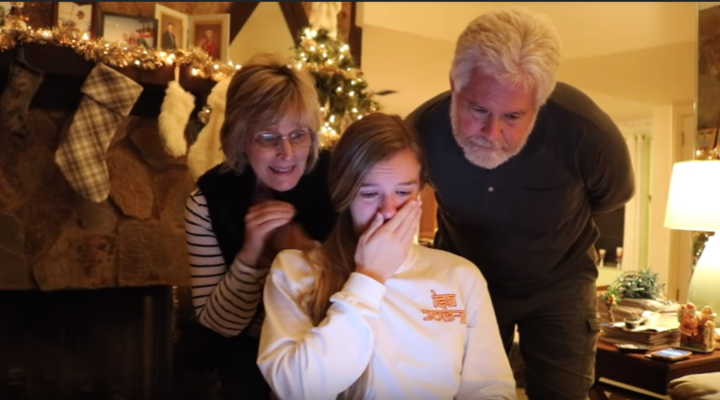
Early decision college process faces DOJ scrutiny

A fun thing to do when you have few minutes is watch college acceptance videos on YouTube. In one classic example, Rylee Hickman, a high school senior in St. Petersburg, Florida, sits at her laptop, flanked by her mom and dad, awaiting a message from Cornell University. It’s December 2017, and the living room is decked out for Christmas. Hickman is a wreck.
“On no, oh no,” she says, holding her hand over her mouth.
And then, she screams. And screams. Her mom waves a red Cornell tee-shirt for the camera.
“I did it, I did it,” Hickman, 17, cries. “I got in.”
Note: it was December? Usually college decisions don’t come until March, but Hickman applied for “early decision” at Cornell. If she got in, she promised to withdraw her applications from other colleges.
“It was definitely my favorite school and my first choice, so I thought that early decision would be the right decision,” Hickman said in a recent interview.
And it’s an increasingly popular decision. The number of early decision applicants to Cornell has increased 83 percent in the last decade, according to the university. Early applicants make up about one-quarter of Cornell’s incoming freshman class. According to an analysis by The Washington Post, that figure rises to 40 percent or higher at many selective schools.
For colleges, there are clear advantages. With the rise of the Common Application, and intense anxiety about getting in, students apply to far more schools than they used to.
“That makes it very, very difficult for the colleges to predict their enrollments,” said Robert Massa, who oversees enrollment at Drew University in New Jersey and is former dean of admissions at Johns Hopkins University. “If [students are] applying to seven or eight colleges, the chances of enrolling in any one are much smaller.”
Early decision gives colleges some certainty about the incoming class. The vast majority of admitted students end up enrolling. In exchange, Massa says, early applicants have an edge.
“If you look nationally, students are accepted at a higher rate in early decision,” he said.
According to U.S. News and World Report, the average early acceptance rate among 216 colleges that shared data for the fall of 2016 was 16.4 percentage points higher than the average regular acceptance rate.
Some schools share lists of early admits with other colleges, Massa said, to make sure the students really withdraw their applications. That practice appears to have drawn the attention of the U.S. Department of Justice. Several elite colleges, including Amherst, Grinnell, Pomona, Wesleyan and Williams, received a letter this month from the department, implying that the DOJ is looking into whether those communications violate antitrust laws. A spokesperson for the Justice Department declined to comment on the investigation.
Some student advocates have other concerns about early decision.
“Early admission programs do disadvantage students from lower-income backgrounds,” said Seppy Basili, COO of the Jack Kent Cooke Foundation, which provides scholarships to high-achieving students from low-income families.
Research by the foundation found that 29 percent of students whose families earned more than $250,000 a year used early decision, Basili said, compared to only 16 percent of students whose families made less than $50,000.
“So right there, you see a huge disparity,” he said.
Low-income students are less likely to have college-educated parents who can guide them through the process, Basili said. They may need to compare financial aid offers from several schools. In early decision, students agree to enroll in a college before they know how much financial aid they will receive.
“They may not have visited as many colleges, they may not have had their SAT and ACT scores done in time,” Basili said. “There’s just a number of steps that you have to go through to be successful in the process that’s harder and harder to do if you’re not prepared for it.”
Colleges do work with students to make the financial aid add up and will let them out of the deal if they can’t afford it, Massa said, but he agreed colleges can do better outreach to help more students from all backgrounds have a moment like Rylee Hickman’s.
There’s a lot happening in the world. Through it all, Marketplace is here for you.
You rely on Marketplace to break down the world’s events and tell you how it affects you in a fact-based, approachable way. We rely on your financial support to keep making that possible.
Your donation today powers the independent journalism that you rely on. For just $5/month, you can help sustain Marketplace so we can keep reporting on the things that matter to you.












